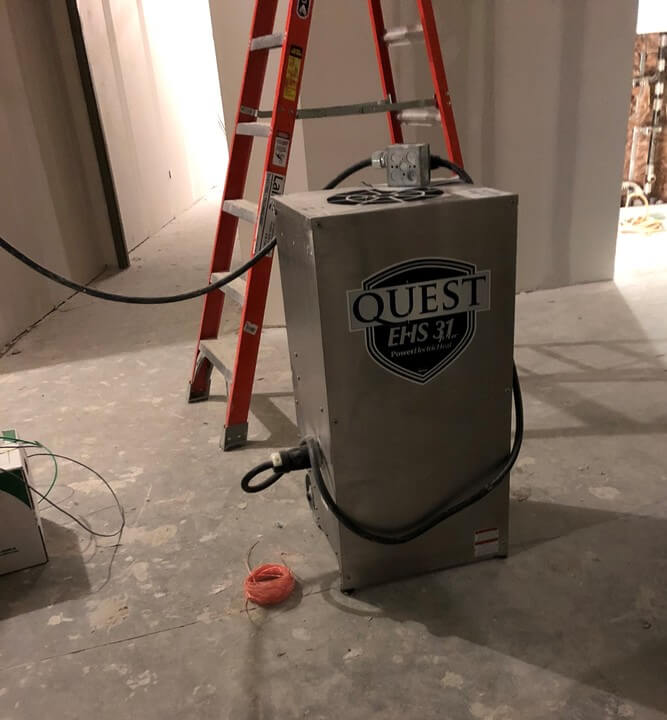Electric Construction Heaters: Counting the Cost
Posted by Matt Milos on Nov 15th 2018

The industry is clearly moving away from direct-fired temporary construction heaters. The open flames, moisture issues, and combustion emissions linked to this kind of heat provide too many challenges for modern projects. Indirect-fired heat solves some of these issues but struggles to heat job-sites evenly and efficiently.
Another alternative for construction heaters that makes a lot of sense on the surface is electric heat. I mean electric heat is easy and doesn't produce emissions, right? You simply plug it in and enjoy a quiet heat source.
However, most people overlook one important factor with electric heat: power.

It takes a tremendous amount of electricity to sufficiently heat most jobsites. For example: a small 10,000 square foot office building or retail space requires 5 heaters. In this scenario, the contractor would need five separate 220v 50 amp circuits to heat the building. And this doesn't just apply to 220v units, as the most common models of construction heaters are 480v units. Yes, you read that right: 480v electric units. When was the last time you had a spare 480v available on your site? On most job-sites, outlets are a precious commodity. Between subcontractors fighting to recharge their tools and frequently tripped circuit breakers, the fact is there is seldom enough power available to operate electric heat.
It isn't impossible, of course, but it certainly isn't practical.
You could pay an electrician to install a separate power box. There is still no guarantee, however, that the power will be sufficient for your construction heaters. Another possible power source is a generator. Though this keeps the combustion outside, you will still need a sizable generator to run temporary heat. In fact, you will probably need a tow-behind unit, burning up to 4 gallons of diesel an hour. On top of that, you are still going to need to pay an electrician to get the supply into the building and to the heaters. No matter how you shake it, large scale electric heat is an expensive proposition.
None of this is to say that electric heat doesn't have any value,* particularly if you have the resources available to power them.
There is however, a better option for construction heaters that has the same benefits as electric, without the drawbacks: hydronic heat. When you compare the two, hydronic alone makes no impact on your job-site electricity and uses considerably less fuel:

Need more convincing? Check out the following two-minute video that lays out exactly why hydronic heat is your best solution for construction heaters this winter. After that, give us a call.
*Phipps does, in fact, carry electric heating. Our EHS31s are some of the safest electric heaters on the market. Fully ETL- and UL-listed, you could throw a blanket over these little guys and they would simply shut themselves off before they could cause a fire. Other features include:
- A remote thermostat for precise temperature control.
- Fully MERV filterable (so they can be part of your indoor quality program).
- Full pressurization units for even, recirculated heat in the structure.
- 31,000 BTU capability when connected to a 220v 50amp power supply, enough to heat approximately 2,000 square feet with decent R values.



